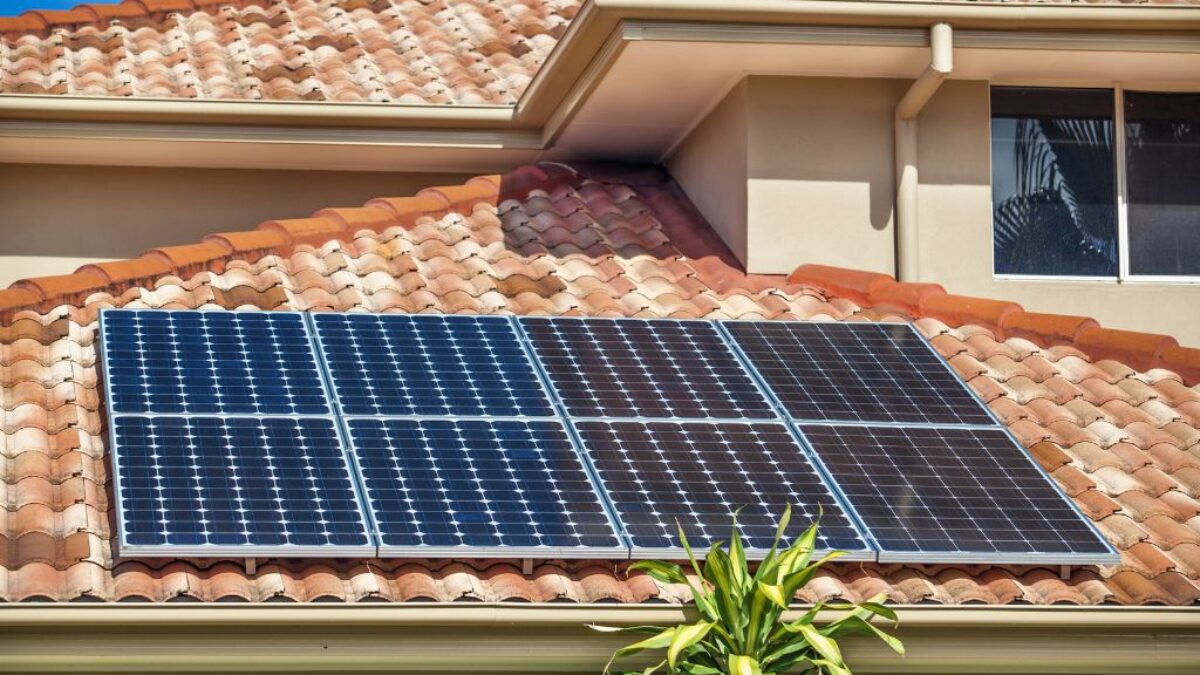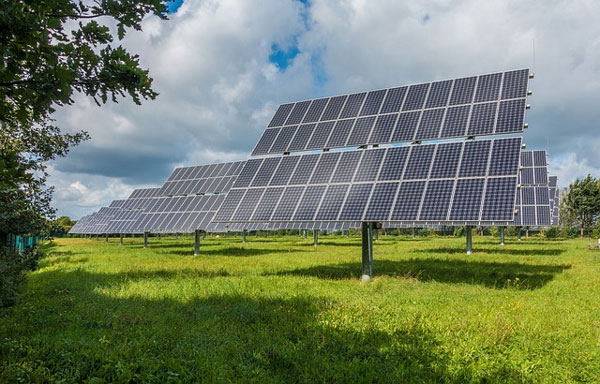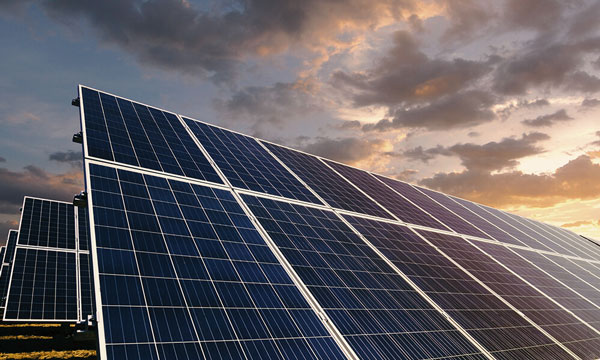Efficient in Cold Weather
Solar systems can be designed to work extremely well in cold weather. While solar panels perform better in colder temperatures, most will work less efficiently if covered in snow. Solar panels use photovoltaic (PV) cells to convert sunlight into electricity, which is more efficient in colder temperatures. Solar systems have reportedly reached peak performance on cold but clear winter days in Germany, even outperforming some of the hotter days. This phenomenon is due to the higher voltage that solar panels can produce when cold.
Practical ApplicationsSolar energy is widely used in places like Scandinavia where winters are long and harsh. It's not uncommon to see solar panels covered in snow. But they are typically manufactured in such a way that they are oriented at an ideal angle to achieve most (and in some cases nearly all) of this or that, with no wasted energy and more exposure, and little downtime during cleaning. Swedish Solar Data Swedish solar output appears to be uniform throughout the year, with only a slight drop during the darkest winter months.
Reflective Snow EnhancementSnow also has benefits for solar panels. Snow reflects more sunlight, which increases irradiance a bit, something scientists call the "albedo effect." As light interacts with friendly surfaces in the living room, it provides a cozy retreat during the winter months. A study in Ontario, Canada found that in some cases, solar panels located in snowy climates produced 50% more energy than similar systems without snow.
Energy Storage SolutionsTo get the most out of solar systems in all weather conditions, many cold climate regions have adopted modern energy storage solutions. Many solar installations in Norway are equipped with large batteries. These feed excess solar energy generated during the day into the batteries, which is very useful during the cold, dark Nordic winter nights.
Common Installation MethodsSolar panels installed in colder climates also require a redesigned approach to cope with environmental conditions. Installers mount solar panels on tall, tilted stands away from the ground and snow areas, which allows cooler air to flow underneath, optimizing performance. Maintenance is simplified and equipment life is extended, ensuring that solar energy can provide energy where it is needed all year round.
Stability Through the Seasons
Solar power is a resilient energy source year round, with the ability to function in most weather conditions without significant degradation of efficiency. This is more than just theory and holds true in a wide range of geographies.
Predictable Energy ProductionSolar panels are designed to generate sunlight efficiency all year round. Every panel must be strategically placed and oriented so that it will receive sunlight throughout each period of the year. In the U.S., solar panels are usually installed facing south at an angle equal to the site's latitude, which means they get sunlight exposure for most of year.
Technological AdaptationsThe continued innovation in technology has made solar energy much more stable. Since electricity can also be generated on clouds, anti-reflective coatings and bifacial panels for example enable sunlight to reach both sides of the module. Both of these have demonstrated success in the field (rainy ass, PNW) where it is famously overcast most days yet they still work.
Integration to Grid and Net-MeteringThis as well has brought grid stability to the next level, when it comes on frequent cases of integration with electrical grids. Net metering system will credit you for excess solar energy that is produced during peak sunny months and fed into the grid. These credits may be used in periods with less sun exposure, covering the time emptying from PV or times when the batteries are off due to low energy production as could happen again and ensuring system stability.
Solar Farms Throughout the YearCase Studies on the feasibility of solar power in other climates In Spain, solar farms are designed with tracking systems the panels can be angled according to the sun's position over weeks and months in a typical year. This has been effective, as Spanish solar farms remain large contributors to the country's renewable energy capacity with a very minor seasonal fluctuation in production.
Innovations from Testing and Research
Nights that offer support for the viability of solar energy adaptation throughout the year are further expanded through daily tests held by researchers, delivering this important scientific breakthrough. The development of these means not only enhance the efficiency, but certainly widen the potential for solar panels to be used in all sorts of climates and through out different times due to innovations like this.
Advanced Photovoltaic MaterialsDevelopers found a new generation of photovoltaic materials that bypass the large silicon cells. Perovskite solar cells may have higher efficiency and lower production costs. Efficiency numbers range over than 25%, measured by the laboratories testing these materials, occasionally surpassing traditional silicon-based cells. These more advanced materials are also able to be somewhat versatile with different lighting conditions, i.e. they can absorb the light on an overcast day or a shorter winter afternoon and still generate electricity through solar energy generation.
Better BatteriesIt is important to the evolution of energy storage technologies in order for making intermittent solar power work. Has poured billions more into innovations in battery technology, including lithium-ion and flow batteries he has put through rigorous testing to ensure they can store the solar energy - generated during peak sunlight hours but unusable at night or on cloudy days. In California, a lot of research has gone into balancing the grid during different seasonal energy demands, this is very important as it can help adjust storage solutions and more.
Applications of Solar Thermal EnergySolar thermal, captures and uses heat from sunlight - potentially a more consistent source of energy year-round. The use of solar thermal can also be extended from one source for immediate conversion to making a continuous supply which in turn will need energy storage it is flexible with time. These systems are becoming the choice for industrial processes as well residential heating because of its optimum performance and unprecedented reliability.
Real-World ImpactThe Mojave Solar Project in the U.S. where solar thermal energy can be used to heat oil, which then turns turbines. The system increases the temperature of solar energy to reach a more efficient level by using mirrors to concentrate sunlight, which leads ultimately towards stable and sustainable clean electricity that is not based on direct presence of bright sun light.
Snow's Cleaning Effect
While snow is typically viewed as a hindrance to solar panel output, it actually helps keep the panels clean and in turn performing better.
Natural Cleaning MechanismAs snow touches the panels, it also is attracted but does not freeze for a brief time due to the warmth of them. When it warms up, or the sun comes out, then all that snow starts falling off. This movement as essentially a squeegee to remove dust, debris and any other residue that you can build up on the surface of your panels which could prevent sunlight from coming in. This makes sense if we consider that in places where there is high prevalence of dust and pollen , seasonal rainfall has been found to restore/recover plus increase performance by removing these layered impurities.
Quantifying the ImpactThe effect of this cleaning has been quantified in studies from cold climates. Solar panel output measurements from the University of Toronto's published study revealed a 3% increase in efficiency after snow events, more exposed and clean surfaces. Particularly during the shorter days of winter when every drop of solar radiation is crucial.
Designing to Maximize BenefitsIn snowy climates, solar panel installations can be designed to take advantage of this natural cleaning effect. Many times panels are positioned at steeper angles so as to both prevent snow build-up but also enable the shedding of accumulated snow and ice that eventually falls off anyway giving a more full cleaning. This method of design is used a lot in countries to the north, where reliable solar energy throughout the year can sometimes be an issue.
Real-World Efficiency GainsThis leads to real-life examples what companies like aredoing with home solar and commercial installations in the northern parts of the U.S. and Canada: Although it is a nominal gain, the slightly higher efficiency after snowfall combined with the maintenance cost savings of not having to clean these so often means that this winter solar power competitive.
Advanced Materials and Design
The development of materials, especially those by outer-space industries has done a lot to support year-round practicality when it comes to the energy capture process. Not just more efficient, these advances also propagate the durability and usability of solar panels in several environmental cases.
Advanced Solar Cell MaterialsOne of the most significant advances in solar technology has come with such innovations as perovskite, a new method for developing high-performance photovoltaic materials. All of these materials have offered various advantages over traditional silicon based cells, including even more light absorption and a lower reliance on individual temperature fluctuations. The perovskite cells retain high efficiencies of over 20% even at low light intensities, which is good news in a gloomy Swedish winter.
Weather Design InnovationsModern solar panel weatherproofing and energy capturing innovations This includes bifacial solar panels that can be tracked throughout the day to harness energy from both sides, increasing output by as much as 30% versus conventional models. And under the snowy conditions, they are very useful because of being able to take advantage of solar radiation reflected from the ground. Their panels are increasingly coated in tough, watertight and freeze-resistant coatings to prevent damage from moisture or dirt while prolonging life and performance.
Nano-technology IntegrationAdvances in nano-technology applied during the manufacturing process of solar panels even achieve super-hydrophobic surfaces repelling water and dust, so that cleaning-related maintenance is lower which results into less efficiency losses. The nano-coatings also help maintain the structural rigidity of the panels from UV radiation and weathering performance can continue for 25-years+
Actual Application and ImplicationsThese materials and designs have since been put into practice in the solar arrays for surrounding Mojave desert, other areas where Scandinavian Troughs are not getting enough sun. In Sweden where the winters can be much harsher than they are here in Copenhagen, solar installations like these advanced materials and designs helps to stabilize power production even during long winter dark days.



